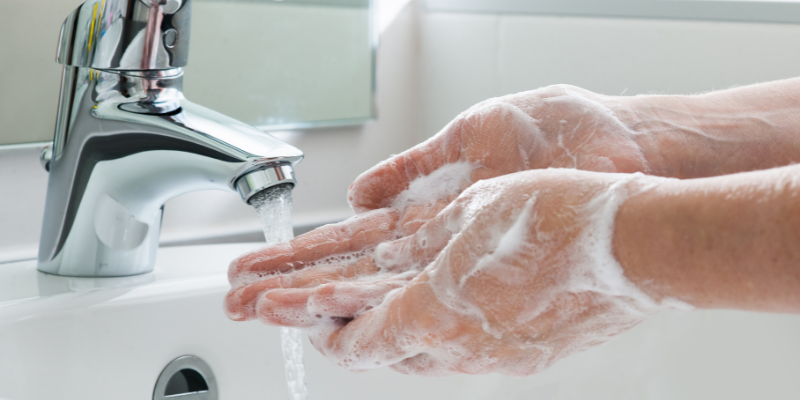
In any healthcare setting, hand hygiene and infection control are crucial measures that help prevent the spread of harmful germs and protect patients and caretakers from illnesses. In today’s blog, we’ll delve more into hand hygiene and infection control in a caretaking setting and provide tips to ensure proper implementation.
What Is Hand Hygiene?
Proper hand hygiene refers to cleaning one’s hands sufficiently to prevent the spread of germs and infections. Germs can be easily transmitted through contact with contaminated surfaces, objects, and people.
Caretakers must wash their hands thoroughly and frequently, especially before and after caring for a patient.
Tips for Better Hand Hygiene
- Wash hands frequently: Regular hand washing is one of the most effective ways to prevent the spread of germs. You should wash your hands before and after eating, after using the bathroom, after caring for someone sick, and after blowing your nose, coughing, or sneezing.
- Use soap and water: Soap helps remove dirt, grease, and germs from your hands. Be sure to lather for at least 20 seconds, scrubbing all areas, including your fingertips and the backs of your hands.
- Use hand sanitizer when soap and water aren’t available: Use an alcohol-based hand sanitizer that contains at least 60% alcohol. Apply the sanitizer to the palm of your hand and rub your hands together, making sure to cover all areas.
- Avoid touching your face: Germs can enter your body through your eyes, nose, and mouth. Avoid touching your face, especially if you haven’t washed your hands.
- Dry your hands thoroughly: Dry your hands thoroughly with a clean towel or air dryer. Moisture can make it easier for germs to spread, so it’s important to dry hands thoroughly.
What Is Infection Control?
Infection control measures also play a critical role in caretaking. Caretakers must maintain a clean and hygienic environment to prevent the spreading of infections. This involves regularly cleaning and disinfecting surfaces and equipment that patients encounter and ensuring that personal protective equipment (PPE) is worn when necessary.
Tips for Effective Infection Control
- Wear PPE when necessary: Personal protective equipment (PPE), such as gloves, gowns, masks, and eye protection, can help protect you and the patient from the spread of infections. Wear it when necessary and follow the procedures for putting it on and removing it.
- Clean and disinfect surfaces regularly: Germs can live on surfaces for hours or even days. Regularly clean and disinfect surfaces and equipment patients encounter, such as bed rails, doorknobs, and medical equipment.
- Follow proper waste disposal procedures: Proper disposal of waste, including contaminated materials, is essential for preventing the spread of infections. Use designated containers and dispose of materials in accordance with local guidelines.
- Use antibiotics appropriately: Overuse and misuse can lead to antibiotic resistance, making it harder to treat infections. Use them only when necessary and follow your healthcare provider’s instructions.
- Stay informed about best practices: Infection control measures constantly evolve, and staying informed is essential. Attend training, read the latest research, and stay updated with guidelines and recommendations from public health organizations.
Failure to practice good hand hygiene and infection control measures can spread infections, which can have severe consequences for patients and caretakers. Infections can result in prolonged hospital stays, increased healthcare costs, and even death.
In conclusion, hand hygiene and infection control are critical components of caretaking. Caretakers must take the necessary steps to prevent the spread of infections by practicing good hand hygiene, maintaining a clean and hygienic environment, and staying informed about best practices. By doing so, they can help protect patients and themselves from the harmful effects of infections and promote better health outcomes.
June 8, 2023 by Life Tech
In any healthcare setting, hand hygiene and infection control are crucial measures that help prevent the spread of harmful germs and protect patients and caretakers from illnesses. In today’s blog, we’ll delve more into hand hygiene and infection...